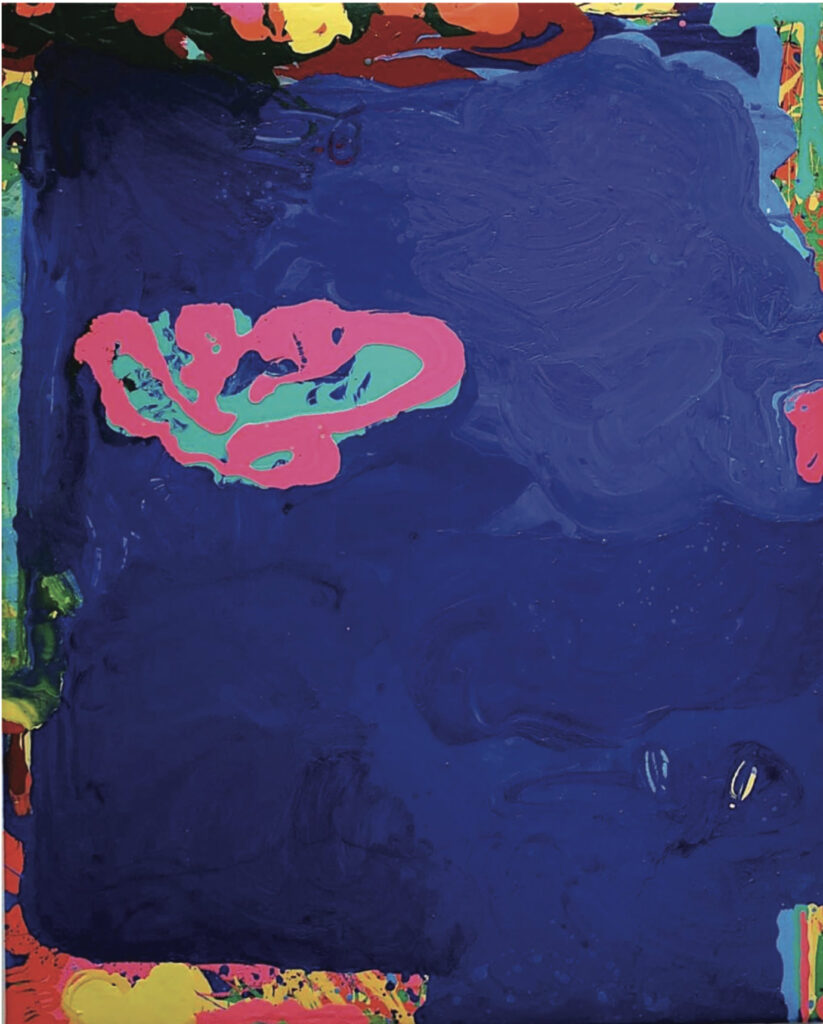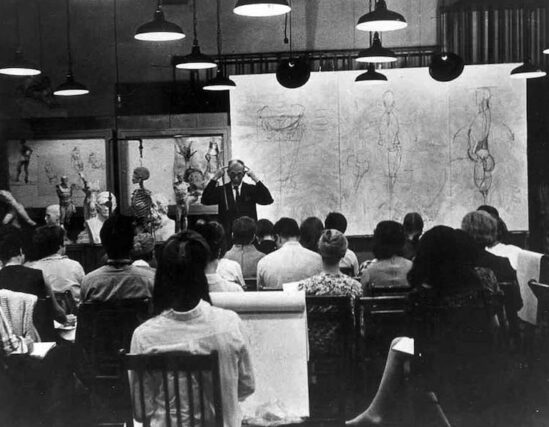
New York-Centric is by no means a comprehensive, all-encompassing selection, nor is it intended to be. Rather, it is an engagingly individual and idiosyncratic survey, a reflection of personal experience and predilection, chosen by James Little, a dedicated painter whose own work could be described as stemming from the same convictions as that of the artists he has included. In a general sense, the shared aesthetic beliefs of the twenty painters in New York-Centric are evident, especially on first acquaintance, but despite these commonalities, the longer we spend with the works in the show, the more aware we become of the notable differences among them. The selection includes works posited on the expressive possibilities of rational, clear-headed geometry and planning, as well as others that depend on improvisation and alertness to suggestions that arise in the course of making the painting, as well as many works whose character lies between these polarities—or somewhere else entirely. The paintings on view range from Robert Swain’s meticulous codification of color relationships to Larry Poons’s explosive tangle of unstable, unnamable hues; from Al Loving’s illusionistic demonstration of how chroma and texture can disrupt even the most lucid geometry, to Stanley Boxer’s affirmation of the materiality of paint itself; from Gabriele Evertz’s disciplined array of colored bands to Ed Clark’s apparently spontaneous, over-scaled swipes of modulated hues; and much, much more. Variousness, in fact, is the main unifying characteristic of this exhibition, after abstractness and a celebration of the power of color.

It’s not surprising, given the diversity of the ages, backgrounds, formations, and ethnicities of the selected artists, that they should have very different conceptions and very different ways of making a picture, their common faith in the importance of abstraction and their enthusiasm for the way color can communicate notwithstanding. Any exhibition that includes work by both Alma Thomas, born at the end of the 19th century, and Margaret Neill, born more than half a century later, is bound to demonstrate both evolving ideas about painting and ways of embodying them. Yet both of these women make work that is about luminous, intense color deployed in ways that implies movement, while evoking our experience of the natural world with its changing hues and intensities of light.

The late art historian Eugene Goossens was fond of saying “No movements. Only artists.” It was his way of reminding us of the dangers of relying on broad generalizations and neat categories in order to come to terms with works of art, instead of paying attention to the special, often unruly, even unclassifiable qualities of the things made by special, perhaps unruly, unclassifiable individuals. It’s helpful to remember Goossens’ admonition when we encounter the compelling, highly personal, wide-ranging, albeit somehow related works in New York-Centric.
New York-Centric continues through May 1, 2019.




